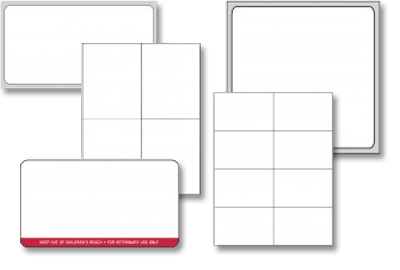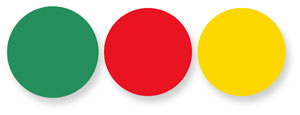How will COVID-19 crisis impact veterinary practice revenue? If you listen to news pundits, you will hear many different explanations about how it will impact the economy. For example, Goldman Sachs predicted that GDP will shrink by 35%. The Wall Street Journal wrote about a “swoosh” shaped recovery where the bottoming out process takes longer, but once the rebound starts it would be steady and gradual. But the fact is, no one really knows. Even economists find it difficult to accurately predict a recession or know exactly how consumer spending habits will change. So with the unknowns of the coronavirus impact far outweighing what we do know, it is difficult to predict what will occur. But, it pays to remain vigilant. Here are a number of simple ways veterinary practices can save money if the impact on your business is negative.
Simple Ways Veterinary Practices Can Save Money
Although you may be able to reduce some large expenditures, saving a little here and there can add up to big savings.
Inventory
Inventory represents the second largest expense next to labor for any practice. Maintaining supplies of:
- Pharmaceutical drugs
- Medicines and ointments
- Shampoos, flea and tick treatments
- Pet food
...Not only result in a substantial financial outlay, but when not managed properly, generate unnecessary costs. These items represent significant revenue opportunities so you can’t afford to run out but too much inventory, some of which may have passed an expiration date, is like lighting money on fire.
But, implementing a color-coding system will prevent you from running out of critical supplies. Use a stoplight approach where each color dot signifies the importance of that item.
- Green - these products are not critical. If you run out, you can order them and get them within a few days - approximately 50% of your inventory
- Yellow - it’s important not to run out of these products and you need to watch them more closely - approximately 30% of your inventory
- Red - essential items that you should never run out of - approximately 20% of your inventory
This approach not only helps you maintain proper inventory levels but demonstrates that unusual activity won’t go unnoticed and serves as a theft deterrent.
Rotate Supplies
Rotating stock is another inventory cost avoidance opportunity. Although everyone knows that older items go in front of new ones, that doesn’t always occur. So, reinforce the importance of properly managing inventory with your staff and mark it with expiration dates. Visible labeling makes use dates more obvious and reduces waste and their associated costs.
Also, label shelves according to drug category to ensure staff knows where to place each item, thereby reducing the chance that drugs get misplaced and ultimately wasted.
Other Waste Reduction Opportunities
From supplying prescriptions for patients to preparing packages for mailing and shipping, label printing touches numerous areas of a veterinary practice. Yet, these common applications are fraught with potential waste traps that can increase costs.
For example, usage studies on printed products, such as labels, show that more than 80% of the cost is associated with the process surrounding the product, not the product itself. Printers, label dispensers and material storage practices are just a few of the processes that can lead to unnecessary increases in your overall cost.
Know Your Printer Settings
Appropriate printer settings optimize print quality, size and orientation. And correct settings will help prevent the need to reprint labels. For example, depending upon the type of printer you use, adjusting the printer settings for paper type or media to labels or cards will optimize the print quality. Wasting 10 out of every 1,000 labels represents an ongoing 1% increase in cost. Plus, if you use a laser printer and are printing an item for the first time, use paper to proof the information, not a label. Paper is 1/10 the cost.
Label Dispensers
If you use a dispenser to apply labels, make sure it’s designed so it doesn’t cause you to waste a label. In fact, if you destroy 1 out of every 25 labels, you just increased your cost by 4%.
Storage
What’s more, storing your labels properly improves processing, efficiency and reduces cost. Moderate temperatures and humidity will improve the printer output. Storing labels on a shelf or in a cabinet, instead of the floor, makes handling smoother. Be careful to avoid dents or dings that force you to dispose of a damaged product. Follow these guidelines to minimize the impact of humidity and warm weather when printing labels.
Buy Compatible Office Products
Label and paper products are commonly designed to run on specific printers. For example, DYMO®, Zebra and generic thermal printers have a mechanism that detects a black mark, notch or hole located between the labels on the roll. Sensing the mark, notch or hole allows the printer to output the amount of labels you specify and ensure that they are cut in the right spot. If you use the wrong format causing the printer to cut the label incorrectly, you increase label waste and cost.
In fact, UAL produces labels that are designed for the specific requirements of DYMO, Zebra and generic thermal printers.
As for laser printers, due to their sheet fed design, they don’t require a sensing device. So, to ensure smooth processing, look for a product description that specifies the labels are compatible with your printer. Then procure labels that are built for the one you use.
Laser and thermal printers contain preprogrammed formats. For example, brands like Zebra and DYMO include options for common office applications such as:
- Prescriptions and medications
- Mailing and shipping
- Files and binders
- Badges, assets and barcoding
Maintaining a supply of labels for each format and then using the one designed for that specific application will reduce label waste and expedite the printing process. And, when possible, print each application in a batch to save time and reduce label waste.
United Ad Label
With over 60 years of label experience, United Ad Label provides cost effective products that allow you to minimize costs regardless of the economic conditions. Veterinary practices can save money using UAL services. Contact us to learn more.

